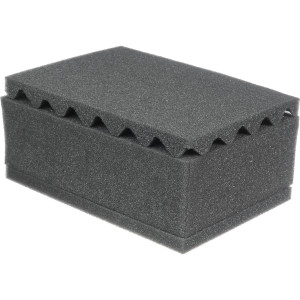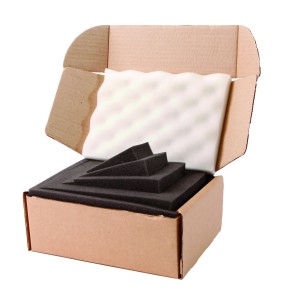The protective packaging solution that provides a host of benefits
 Foams have been used in the packaging sector for many years, but the introduction of high-density polyurethane foams has led to a popular alternative thanks to its adaptive capabilities and flexibility, as Technical Foam Services explains:
Foams have been used in the packaging sector for many years, but the introduction of high-density polyurethane foams has led to a popular alternative thanks to its adaptive capabilities and flexibility, as Technical Foam Services explains:
Commercial production of flexible polyurethane foams started in the UK around 60 years ago and today they account for over half of the total worldwide production of polyurethanes (PUs) and are used in a diverse range of applications.
When high-value, heavier products and equipment need to be transported, selecting the correct packaging foam is vital to ensure both protection and impact absorption. Therefore, a high-density, closed cell material provides the optimum solution, combining heavy-duty performance, high load bearing (HLB) capacity and impact protection in a lightweight, thin foam.
As one of the leading manufacturers and converters of high-density (HD) protective packaging foams, UK-based Technical Foam Services offers a range of shapes and sizes to meet the precise requirements of a wide spectrum of applications. Here, the company’s joint managing director, Duncan Geddes, tells Converter about the benefits of polyurethane foams.
“We recommend the use of HD polyurethane foams as an alternative to traditional polyethylene foams as polyurethane blocks are normally between 500 and 1,000mm high, whereas polyethylene blocks are a maximum of 100mm high. This means it is far more cost effective for large pieces of foam to be cut from our HD polyurethane range. Sections can be computerised numerical control (CNC) cut or routed in one piece of HD polyurethane foam, rather than laminating pieces of polyethylene foam together.
“We specialise in the supply of die-cut, routed and machined HD polyurethane foams for specialist packaging; for example, it is used in presentation case inserts, for jewellery trays, glass and china packaging.”
Flexible polyurethane foams are manufactured by the simultaneous reactions of polyol(s) and water with an isocyanate, in the presence of various additives. During the reaction, gas bubbles are generated and trapped to form a cellular structure and a liquid mixture is transformed into a low-density cellular solid. Foams of different structures, feel and density can be made.
 Technical Foam Services stocks materials from various global foam manufacturers and due to the high-end nature of its clients, it offers access to a variety of products so they can explore different densities and colours depending on their corporate brand.
Technical Foam Services stocks materials from various global foam manufacturers and due to the high-end nature of its clients, it offers access to a variety of products so they can explore different densities and colours depending on their corporate brand.
HD polyurethane foams are open-cell, and this structure provides better impact absorption, due to movement of air within the cells. Polyethylene foams are closed cell, which makes them stiffer and harder, making them good for static packaging applications, but when flexibility is required for product comfort, Geddes says that HD polyurethane foams are a better option.
In addition to shock absorption closed cell technology, products from Technical Foam Services have other benefits, including anti-static properties, which is useful in packaging for electrical goods and components. As well as this, they are flame retardant and UV, chemical and moisture resistant, as products are non-corrosive and odourless, providing a safe and neutral environment for light, moisture and chemically-sensitive objects.
They also come with other useful advantages. There is a pink foam available that is cheaper than its polyethylene equivalent, and due to its high density, this grade of polyurethane does not dis-colour unless it is exposed to UV light for a long period of time. It is harmless to the skin and completely non-toxic, too.
“Not only this, but the material can be widely re-used; all waste and off-cuts of HD polyurethane foam can be granulated and used within the manufacture of carpet underlay. So it benefits many areas,” Geddes adds.
“HD polyurethane foams are driven by end-user demand, so if a major manufacturer decides to package its products within a unique, quality material, then there is always the possibility to develop a bespoke grade or colour for that manufacturer.”

